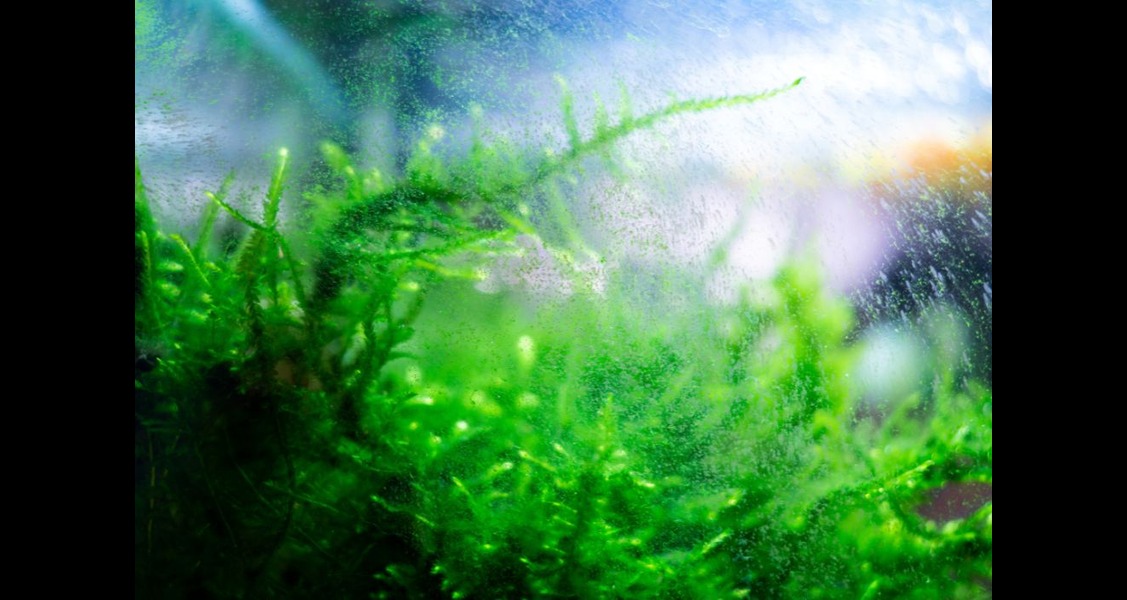Is Algae Helpful or Harmful for Your Aquarium?
Aug 15, 2025

There it is again—that stubborn, green, gooey film staging yet another hostile takeover of your aquarium. Algae!
Algae is a common problem for aquarium owners. This is because it likes the warm, nutrient-rich environment of fish tanks. Most aquarium owners try to remove it as soon as possible because it can make the tank look dirty and unhealthy. But is algae actually harmful to your aquarium, or could it possibly be helpful?
Good vs. Bad Algae
There are different types of algae, and not all of them are bad. In fact, some algae can be beneficial for your aquarium.
The harmful types of algae are ones that grow excessively and quickly and consume a large amount of nutrients and oxygen. They compete with other aquatic plants and animals for these resources, and can potentially harm or kill them.
But there are also good types of algae that can help maintain a healthy environment for your fish, such as diatoms and cyanobacteria, which serve as a food source for some fish and can even help keep harmful algae in check.
When To Remove vs. Keep Algae
When should you remove algae from your aquarium, and when should you just leave it alone? It depends on a few factors, the main ones being the type of algae and how much it’s growing.
Type of Algae
You should immediately remove some harmful types of algae, like hair algae or black beard algae. These types of algae can quickly take over your tank and harm your fish and plants. But if the algae is a beneficial type, like brown diatoms or green spot algae, you may want to leave it alone. These types of algae can help regulate nutrients in your tank and provide a food source for some fish.
Amount of Growth
If you notice the algae is growing rapidly, remove it. This is the case even for good types of algae, like green spot algae or diatoms. While these types may not harm your tank, an excessive amount can still be unsightly and indicate an imbalance in the tank’s ecosystem.
Ways To Remove Algae From an Aquarium
You’ve determined the algae in your tank needs to go. How do you get rid of it? There are a few different methods you can use.
One less aggressive method is to use live plants to battle the algae. Some types of plants, like hornwort or water sprite, are particularly effective at consuming excess nutrients in the tank that contribute to algae growth. By adding these plants, you create competition for the same resources that the algae needs to survive.
Another option is to manually remove the algae. You can use a clean toothbrush or algae scraper to gently brush the algae off the surfaces in your tank. But if gentle methods aren’t effective enough, you may need to consider using chemical treatments for removing algae.
Is algae helpful or harmful for your aquarium? It depends on the type of algae present. While beneficial algae can help maintain a healthy balance in your tank, excessive growth of bad algae can have negative effects on your fish and plants. If algae starts to grow in your tank, first, identify its type. From there, you can decide if you want to remove it, reduce it, or let it be.


Disclaimer: healthcareforpets.com and its team of veterinarians and clinicians do not endorse any products, services, or recommended advice. All advice presented by our veterinarians, clinicians, tools, resources, etc is not meant to replace a regular physical exam and consultation with your primary veterinarian or other clinicians. We always encourage you to seek medical advice from your regular veterinarian.

